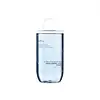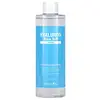What's inside
What's inside
 Key Ingredients
Key Ingredients

 Benefits
Benefits

 Concerns
Concerns

 Ingredients Side-by-side
Ingredients Side-by-side

Water
Skin ConditioningMethylpropanediol
Solvent1,2-Hexanediol
Skin ConditioningSea Water
HumectantGlycerin
HumectantBetaine
HumectantAllantoin
Skin ConditioningButylene Glycol
HumectantCaprylyl Glycol
EmollientEthylhexylglycerin
Skin ConditioningPanthenol
Skin ConditioningXanthan Gum
EmulsifyingMalachite Extract
AntioxidantDisodium EDTA
Hydrolyzed Hyaluronic Acid
HumectantPentylene Glycol
Skin ConditioningXylitylglucoside
HumectantAnhydroxylitol
HumectantSodium Hyaluronate
HumectantXylitol
HumectantPotassium Hyaluronate
Skin ConditioningGlucose
HumectantHydrolyzed Sodium Hyaluronate
Skin ConditioningSodium Acetylated Hyaluronate
HumectantHydroxypropyltrimonium Hyaluronate
Sodium Hyaluronate Crosspolymer
HumectantDimethylsilanol Hyaluronate
HumectantHydrolyzed Calcium Hyaluronate
Skin ConditioningHyaluronic Acid
HumectantSodium Sulfated Hyaluronate
EmollientHamamelis Virginiana Extract
AntiseborrhoeicChamaecyparis Obtusa Leaf Extract
Skin ConditioningSodium Stearoyl Hyaluronate
Skin ConditioningSodium Oleoyl Hyaluronate
Skin ConditioningWater, Methylpropanediol, 1,2-Hexanediol, Sea Water, Glycerin, Betaine, Allantoin, Butylene Glycol, Caprylyl Glycol, Ethylhexylglycerin, Panthenol, Xanthan Gum, Malachite Extract, Disodium EDTA, Hydrolyzed Hyaluronic Acid, Pentylene Glycol, Xylitylglucoside, Anhydroxylitol, Sodium Hyaluronate, Xylitol, Potassium Hyaluronate, Glucose, Hydrolyzed Sodium Hyaluronate, Sodium Acetylated Hyaluronate, Hydroxypropyltrimonium Hyaluronate, Sodium Hyaluronate Crosspolymer, Dimethylsilanol Hyaluronate, Hydrolyzed Calcium Hyaluronate, Hyaluronic Acid, Sodium Sulfated Hyaluronate, Hamamelis Virginiana Extract, Chamaecyparis Obtusa Leaf Extract, Sodium Stearoyl Hyaluronate, Sodium Oleoyl Hyaluronate
Water
Skin ConditioningGlycerin
HumectantMethylpropanediol
SolventPentylene Glycol
Skin ConditioningSodium Hyaluronate
HumectantButylene Glycol
HumectantSodium Salicylate
PreservativeCamellia Sinensis Leaf Water
MaskingMelaleuca Alternifolia Leaf Water
AntimicrobialPropylene Glycol
HumectantGlycolic Acid
BufferingLactic Acid
BufferingCitric Acid
BufferingCentella Asiatica Extract
CleansingTrehalose
HumectantSodium PCA
HumectantSorbitol
HumectantUrea
BufferingPanthenol
Skin ConditioningPolyquaternium-51
Skin ConditioningMalic Acid
BufferingTartaric Acid
BufferingHydrolyzed Collagen
EmollientAloe Barbadensis Leaf Juice
Skin ConditioningHydrolyzed Hyaluronic Acid
HumectantCitrus Limon Fruit Extract
MaskingVaccinium Myrtillus Fruit Extract
Skin ConditioningPyrus Malus Fruit Extract
Skin ConditioningSaccharum Officinarum Extract
MoisturisingVitis Vinifera Fruit Extract
Skin ConditioningCaprylyl Glycol
EmollientAngelica Dahurica Root Extract
Skin ConditioningChrysanthemum Morifolium Flower Extract
Skin ConditioningChamomilla Recutita Leaf Extract
MaskingHippophae Rhamnoides Extract
MaskingMorus Alba Root Extract
BleachingThuja Occidentalis Leaf Extract
AntioxidantVitex Trifolia Fruit Extract
Skin ConditioningUrtica Dioica Extract
AstringentPersea Gratissima Fruit Extract
EmollientAloe Barbadensis Leaf Extract
EmollientSambucus Nigra Fruit Extract
AstringentAsarum Sieboldii Root Extract
Skin ConditioningCnidium Officinale Root Extract
Skin ConditioningEclipta Prostrata Extract
Skin ConditioningJuglans Regia Seed Extract
Skin ConditioningSimmondsia Chinensis Seed Extract
AbrasiveHydroxyethylcellulose
Emulsion StabilisingEthylhexylglycerin
Skin Conditioning1,2-Hexanediol
Skin ConditioningPhenoxyethanol
PreservativeMethylparaben
PreservativeGlyoxal
AntimicrobialSodium Nitrate
SoothingWater, Glycerin, Methylpropanediol, Pentylene Glycol, Sodium Hyaluronate, Butylene Glycol, Sodium Salicylate, Camellia Sinensis Leaf Water, Melaleuca Alternifolia Leaf Water, Propylene Glycol, Glycolic Acid, Lactic Acid, Citric Acid, Centella Asiatica Extract, Trehalose, Sodium PCA, Sorbitol, Urea, Panthenol, Polyquaternium-51, Malic Acid, Tartaric Acid, Hydrolyzed Collagen, Aloe Barbadensis Leaf Juice, Hydrolyzed Hyaluronic Acid, Citrus Limon Fruit Extract, Vaccinium Myrtillus Fruit Extract, Pyrus Malus Fruit Extract, Saccharum Officinarum Extract, Vitis Vinifera Fruit Extract, Caprylyl Glycol, Angelica Dahurica Root Extract, Chrysanthemum Morifolium Flower Extract, Chamomilla Recutita Leaf Extract, Hippophae Rhamnoides Extract, Morus Alba Root Extract, Thuja Occidentalis Leaf Extract, Vitex Trifolia Fruit Extract, Urtica Dioica Extract, Persea Gratissima Fruit Extract, Aloe Barbadensis Leaf Extract, Sambucus Nigra Fruit Extract, Asarum Sieboldii Root Extract, Cnidium Officinale Root Extract, Eclipta Prostrata Extract, Juglans Regia Seed Extract, Simmondsia Chinensis Seed Extract, Hydroxyethylcellulose, Ethylhexylglycerin, 1,2-Hexanediol, Phenoxyethanol, Methylparaben, Glyoxal, Sodium Nitrate
 Reviews
Reviews

Ingredients Explained
These ingredients are found in both products.
Ingredients higher up in an ingredient list are typically present in a larger amount.
1,2-Hexanediol is a synthetic liquid and another multi-functional powerhouse.
It is a:
- Humectant, drawing moisture into the skin
- Emollient, helping to soften skin
- Solvent, dispersing and stabilizing formulas
- Preservative booster, enhancing the antimicrobial activity of other preservatives
Butylene Glycol (or BG) is used within cosmetic products for a few different reasons:
Overall, Butylene Glycol is a safe and well-rounded ingredient that works well with other ingredients.
Though this ingredient works well with most skin types, some people with sensitive skin may experience a reaction such as allergic rashes, closed comedones, or itchiness.
Learn more about Butylene GlycolCaprylyl Glycol is a humectant and emollient, meaning it attracts and preserves moisture.
It is a common ingredient in many products, especially those designed to hydrate skin. The primary benefits are retaining moisture, skin softening, and promoting a healthy skin barrier.
Though Caprylyl Glycol is an alcohol derived from fatty acids, it is not the kind that can dry out skin.
This ingredient is also used as a preservative to extend the life of products. It has slight antimicrobial properties.
Learn more about Caprylyl GlycolEthylhexylglycerin (we can't pronounce this either) is commonly used as a preservative and skin softener. It is derived from glyceryl.
You might see Ethylhexylglycerin often paired with other preservatives such as phenoxyethanol. Ethylhexylglycerin has been found to increase the effectiveness of these other preservatives.
Glycerin is already naturally found in your skin. It helps moisturize and protect your skin.
A study from 2016 found glycerin to be more effective as a humectant than AHAs and hyaluronic acid.
As a humectant, it helps the skin stay hydrated by pulling moisture to your skin. The low molecular weight of glycerin allows it to pull moisture into the deeper layers of your skin.
Hydrated skin improves your skin barrier; Your skin barrier helps protect against irritants and bacteria.
Glycerin has also been found to have antimicrobial and antiviral properties. Due to these properties, glycerin is often used in wound and burn treatments.
In cosmetics, glycerin is usually derived from plants such as soybean or palm. However, it can also be sourced from animals, such as tallow or animal fat.
This ingredient is organic, colorless, odorless, and non-toxic.
Glycerin is the name for this ingredient in American English. British English uses Glycerol/Glycerine.
Learn more about GlycerinHydrolyzed Hyaluronic Acid is a form of hyaluronic acid. It is created by the hydrolysis of hyaluronic acid with a high molecular weight. Once created, Hydrolyzed Hyaluronic Acid has a low molecular weight.
Low molecular weight HA has been shown to hydrate and increase elasticity of the skin. Increasing elasticity is also associated with reduction of wrinkle depth.
One study found topical low molecular weight hyaluronic acid may be considered for the treatment of rosacea in the adult population. However, we always recommend speaking with a professional about your skin concerns.
Hyaluronic acids are a humectant. This means they draw moisture from the air. Hyaluronic acids help moisturize, soothe, and protect the skin.
Read more about other common forms of hyaluronic acid:
Learn more about Hydrolyzed Hyaluronic AcidMethylpropanediol is a synthetic solvent and humectant.
As a solvent, it helps dissolve other ingredients, helping to evenly distribute ingredients throughout the product. This ingredient has also been shown to have antimicrobial properties which makes it a preservative booster.
Methylpropanediol is able to add a bit of moisture to the skin. It also helps other ingredients be better absorbed into the skin, such as salicylic acid.
Learn more about MethylpropanediolPanthenol is a common ingredient that helps hydrate and soothe the skin. It is found naturally in our skin and hair.
There are two forms of panthenol: D and L.
D-panthenol is also known as dexpanthenol. Most cosmetics use dexpanthenol or a mixture of D and L-panthenol.
Panthenol is famous due to its ability to go deeper into the skin's layers. Using this ingredient has numerous pros (and no cons):
Like hyaluronic acid, panthenol is a humectant. Humectants are able to bind and hold large amounts of water to keep skin hydrated.
This ingredient works well for wound healing. It works by increasing tissue in the wound and helps close open wounds.
Once oxidized, panthenol converts to pantothenic acid. Panthothenic acid is found in all living cells.
This ingredient is also referred to as pro-vitamin B5.
Learn more about PanthenolPentylene glycol is typically used within a product to thicken it. It also adds a smooth, soft, and moisturizing feel to the product. It is naturally found in plants such as sugar beets.
The hydrophilic trait of Pentylene Glycol makes it a humectant. As a humectant, Pentylene Glycol helps draw moisture from the air to your skin. This can help keep your skin hydrated.
This property also makes Pentylene Glycol a great texture enhancer. It can also help thicken or stabilize a product.
Pentylene Glycol also acts as a mild preservative and helps to keep a product microbe-free.
Some people may experience mild eye and skin irritation from Pentylene Glycol. We always recommend speaking with a professional about using this ingredient in your routine.
Pentylene Glycol has a low molecular weight and is part of the 1,2-glycol family.
Learn more about Pentylene GlycolSodium Hyaluronate is hyaluronic acid's salt form. It is commonly derived from the sodium salt of hyaluronic acid.
Like hyaluronic acid, it is great at holding water and acts as a humectant. This makes it a great skin hydrating ingredient.
Sodium Hyaluronate is naturally occurring in our bodies and is mostly found in eye fluid and joints.
These are some other common types of Hyaluronic Acid:
Learn more about Sodium HyaluronateWater. It's the most common cosmetic ingredient of all. You'll usually see it at the top of ingredient lists, meaning that it makes up the largest part of the product.
So why is it so popular? Water most often acts as a solvent - this means that it helps dissolve other ingredients into the formulation.
You'll also recognize water as that liquid we all need to stay alive. If you see this, drink a glass of water. Stay hydrated!
Learn more about Water